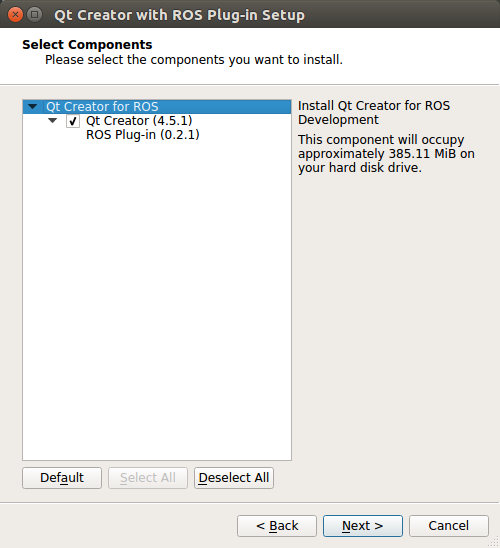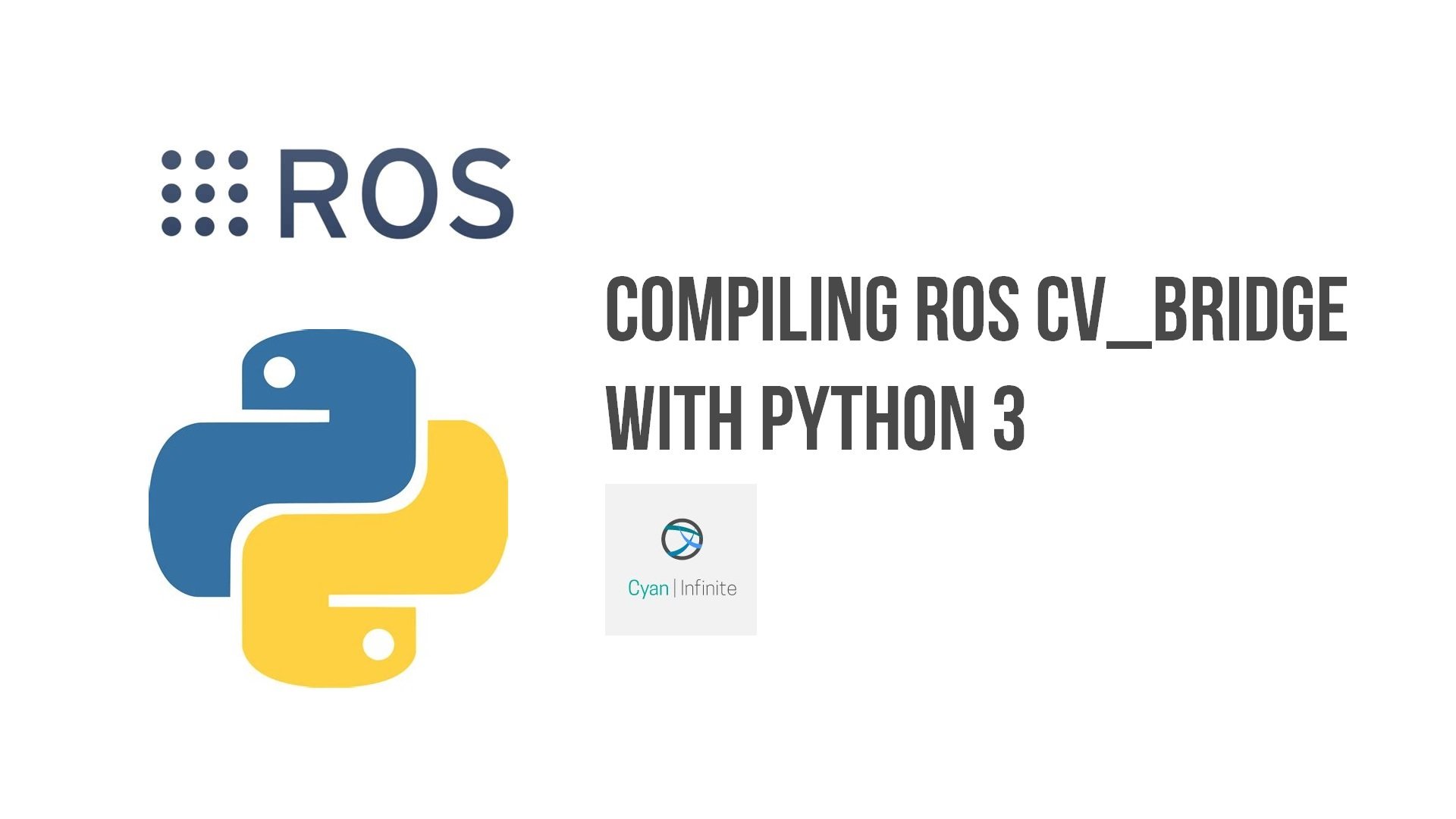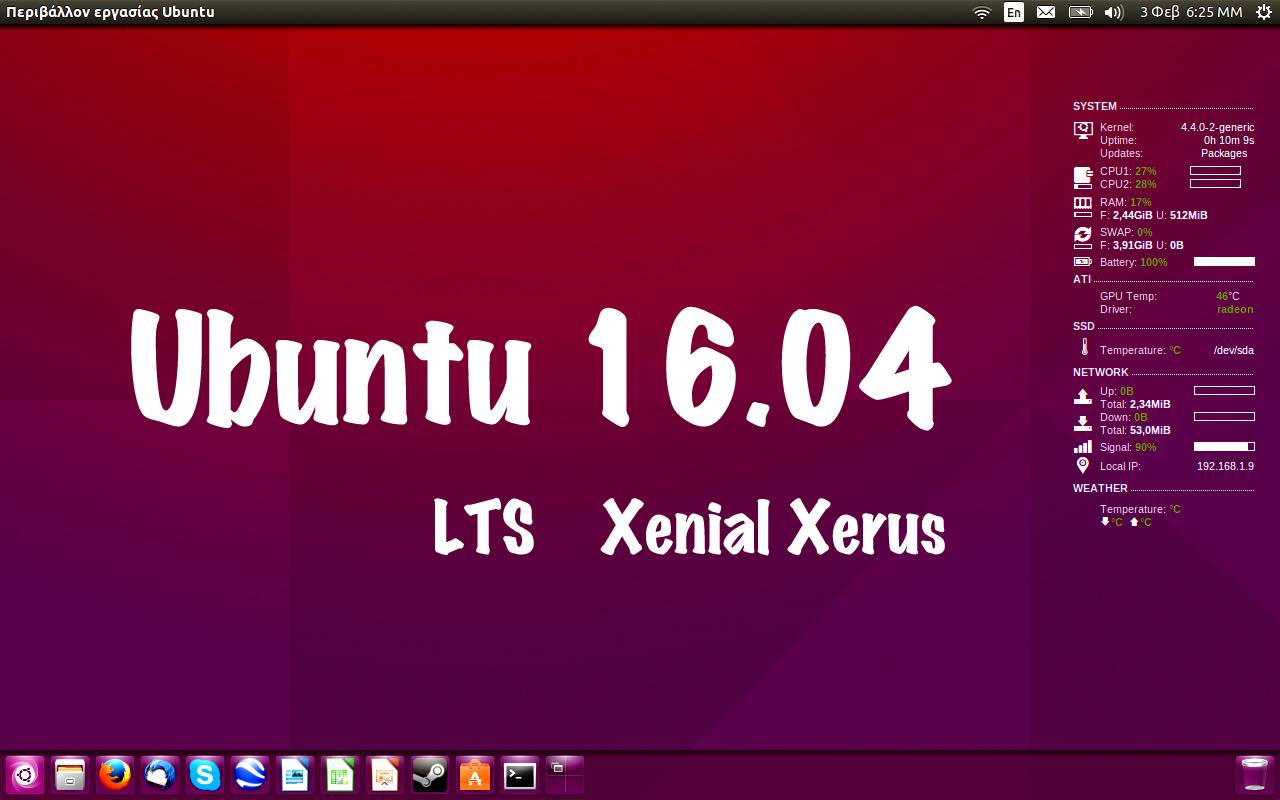

- #DOWNLOAD UBUNTU 16.04 ROS HOW TO#
- #DOWNLOAD UBUNTU 16.04 ROS INSTALL#
- #DOWNLOAD UBUNTU 16.04 ROS WINDOWS 10#
- #DOWNLOAD UBUNTU 16.04 ROS PORTABLE#
- #DOWNLOAD UBUNTU 16.04 ROS PASSWORD#
#DOWNLOAD UBUNTU 16.04 ROS PASSWORD#
However, the first time you log in, you’ll be asked to change this password.Īfter I confirm the new password by typing it for a the second time, the PuTTY connection closes and I need to SSH in again – this time with the new password.Īt this point Ubuntu 16.04 is installed onto the Raspberry Pi 3 and ready to be used – I can verify this by using the command below: lsb_release -a Since I was expecting this, I clicked on Yes, and a window opens asking for a username and password. The first time you log in, the username is ubuntu and the password is ubuntu. When I clicked on the “Open” button, the system shows me a window like the one below. My Raspberry Pi 3 has IP address 192.168.1.125, and I typed this into the “Host Name” box in the window above. Once my path is updated, I’m able to type “putty” at a command prompt and a window opens like the one below: You can see your machine’s path from a PowerShell prompt using the command below: Get-ChildItem -Path Env:Path | Select-Object -ExpandProperty Value I find it helps to add the path to PuTTY to my machine path – I found the default path for the 64-bit installer to be “ C:\Program Files\PuTTY“, which I then added to my machine’s path. I downloaded an installer for PuTTY from here – this allows me to SSH into my Raspberry Pi 3 from my Windows machine. Connect to the Raspberry Pi 3 over ssh using PuTTY You might notice in the picture above that after the initial connection has been made, a few seconds later the connection drops once – I found this happens quite often, so before logging in with PuTTY I often leave the connection up for a few seconds to settle. However, I’ve also done this without a monitor – I happen to know that the wired IP address that my Raspberry Pi 3 always chooses is 192.168.1.125 – so if I insert the SD card into my Pi 3, and then switch it on, I know that if I run “ ping 192.168.1.125 -t“, it’ll time out until the wired ethernet connects. The easiest way to see what happens when you boot your Raspberry Pi 3 is to connect it to an HDMI monitor – I am lucky enough to have one of these monitor types. Now I insert the SD card into my Raspberry Pi 3, and connect the USB power supply. Insert the SD card to the Raspberry Pi 3 and boot

It took my machine about 7 minutes to flash the image to my SD card. I browsed to the image file after opening “Win32 Disk Imager”, selected the drive letter associated with my SD card, and then I clicked on the “Write” button. Īnother cool application for doing this is Etcher.io. There’s more information about this tool here. I did this using a tool called “Win32DiskImager” which I downloaded from. Now that I have an un-zipped Ubuntu 16.04 image and a clean SD card, I need to flash this image to the card.
#DOWNLOAD UBUNTU 16.04 ROS HOW TO#
I’ve previously blogged about how to do this at the link below: If you’ve a brand new card you might not need to format it, but if you’ve used your card for a previous installation, I think the easiest way to format a card is to use the diskpart tool which is shipped with Windows. Once you’ve downloaded this zipped file, you’ll need to extract it (using a tool such as 7-zip). You can download the zipped up image file from here – this is listed as “Ubuntu Classic Server 16.04 for the Raspberry Pi 3” on this page (shown below, highlighted in red).
#DOWNLOAD UBUNTU 16.04 ROS INSTALL#
Install Ubuntu 16.04 LTS Download Ubuntu for the Raspberry Pi 3 ARM Processor NET Core 2 C# apps to Linux distros for the Raspberry Pi – check it out here. Since writing this, I’ve written another post about deploying. I’m not very familiar with Linux so some of these steps might be really obvious to more skilled Linux users.

There are a few posts about different parts of this already, but I wasn’t able to find a single post which described all the steps.
#DOWNLOAD UBUNTU 16.04 ROS WINDOWS 10#
NET Core application deployed to Ubuntu 16.04 from a Windows 10 machine – the post below describes: NET Core “hello world” application on a Pi 3 with Windows IoT core.
#DOWNLOAD UBUNTU 16.04 ROS PORTABLE#
NET Core (which is portable across Windows and Linux) with an Ubuntu installation on a Raspberry Pi 3. I usually work with Windows 10 IoT Core on my Raspberry Pi 3, but recently I’ve started to think about how I could use.


 0 kommentar(er)
0 kommentar(er)
